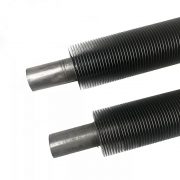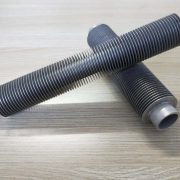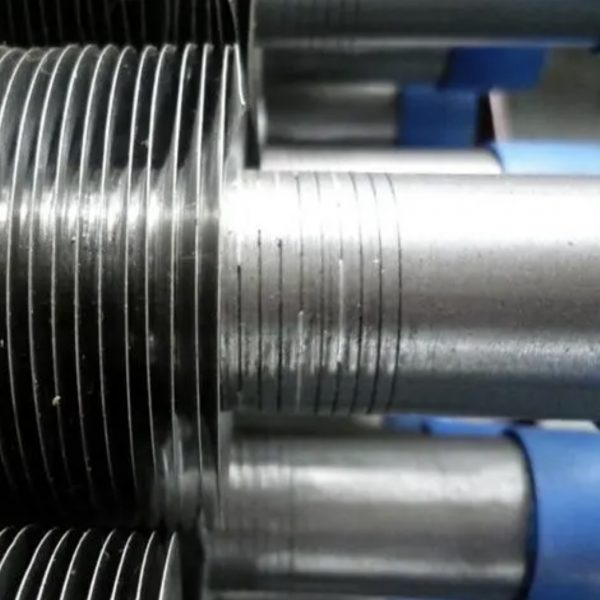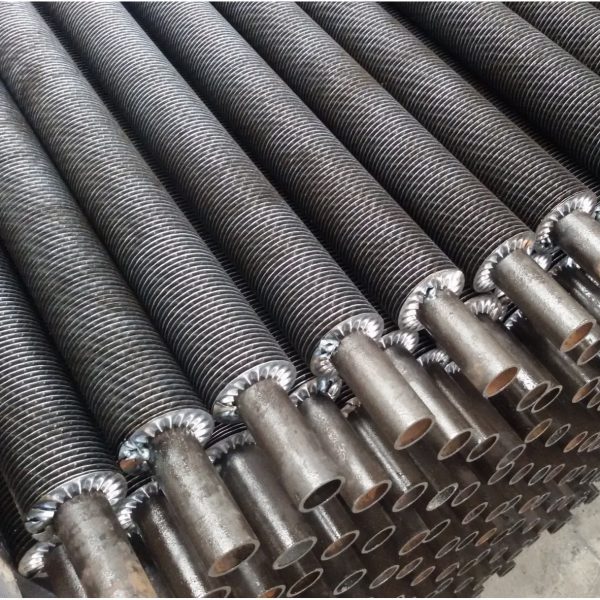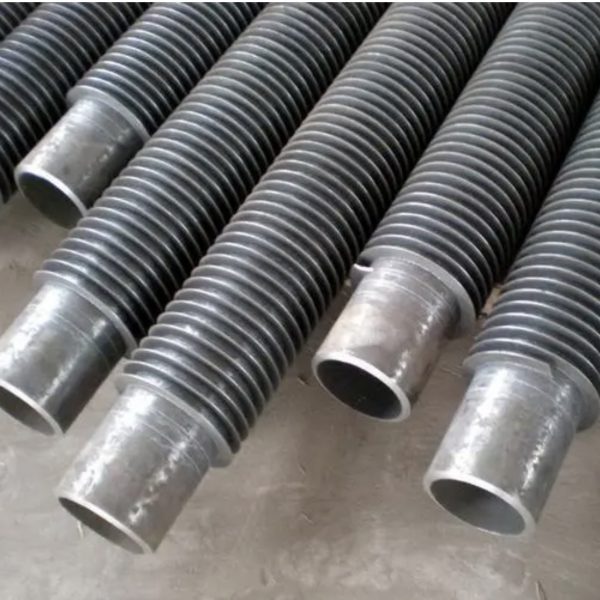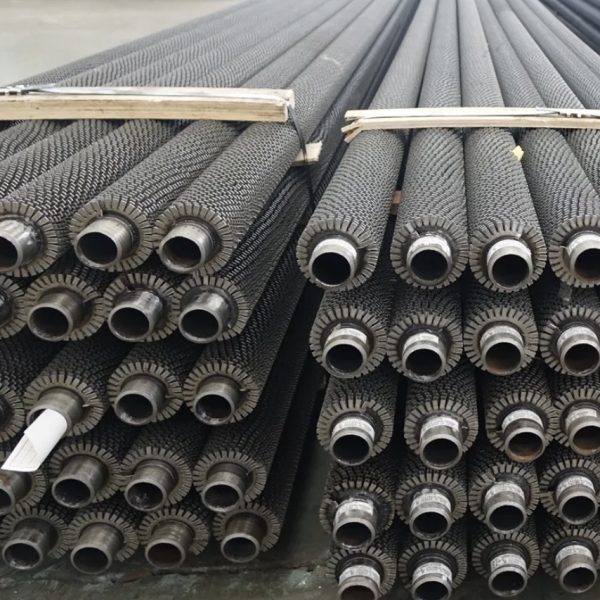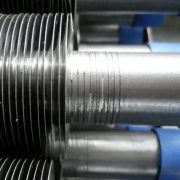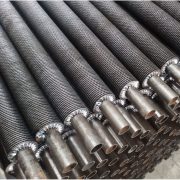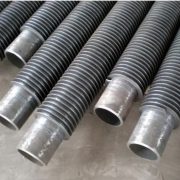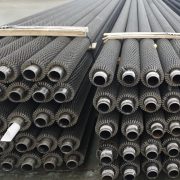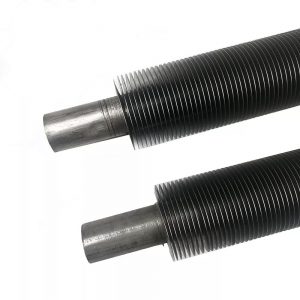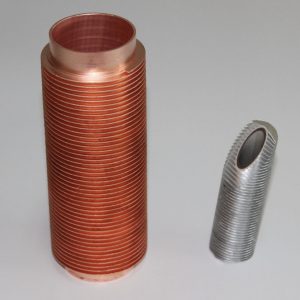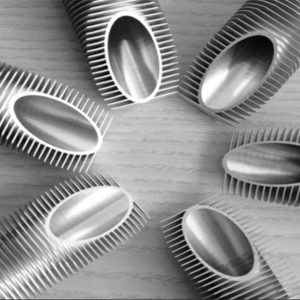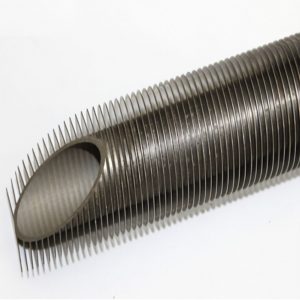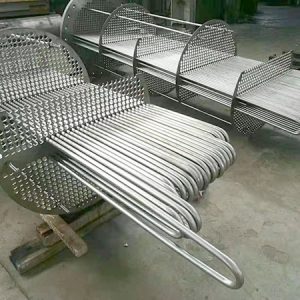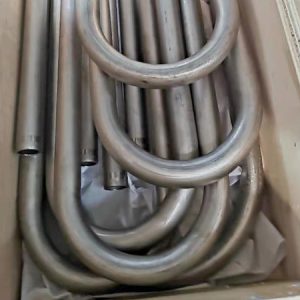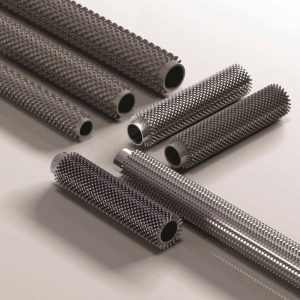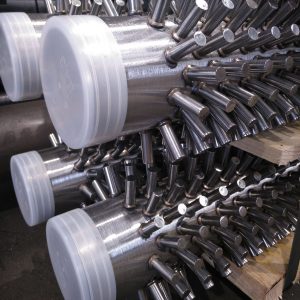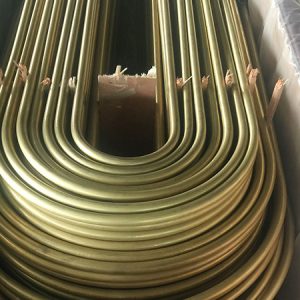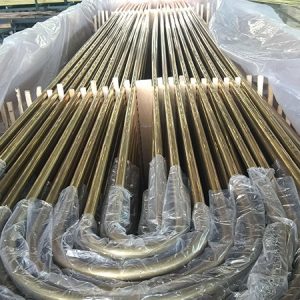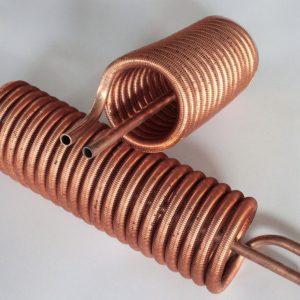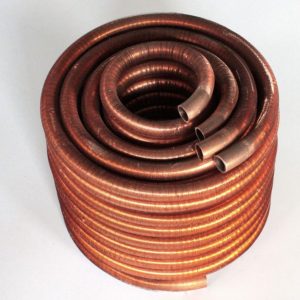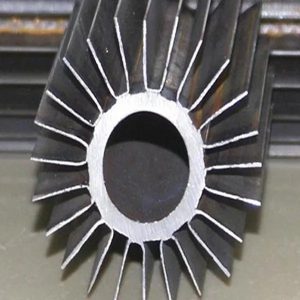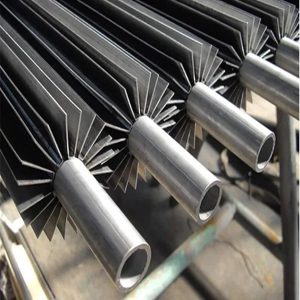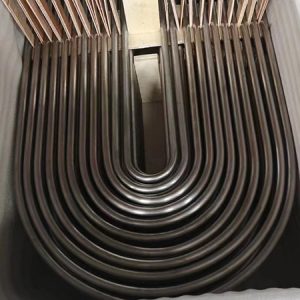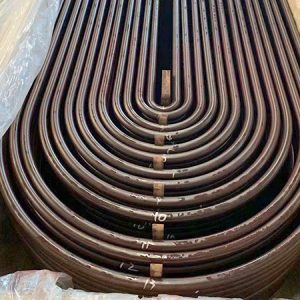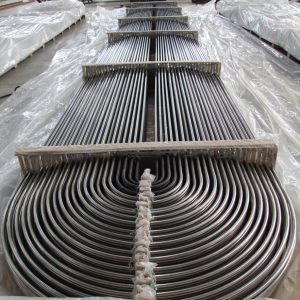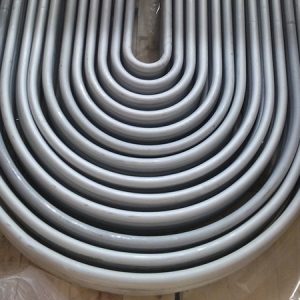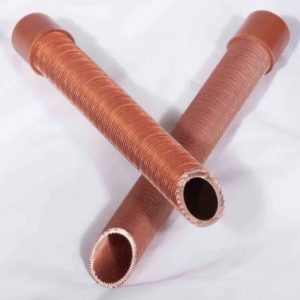أنبوب الزعنفة الليزرية
أنبوب لحام الزعانف بالليزر هو جديد, مواد تبادل حراري مقاومة للاهتراء وفعالة في صناعة لحام أنبوب الزعانف. إنه عنصر تبادل حراري عالي الكفاءة وموفر للطاقة مع كفاءة عالية في التبادل الحراري, منطقة كبيرة لتبديد الحرارة, عمر خدمة طويل والتكيف مع درجة الحرارة لديها مجموعة واسعة, ارتفاع الضغط, ويتوافق مع المعايير الوطنية للحفاظ على الطاقة وحماية البيئة الانبعاثات. يستخدم على نطاق واسع في استعادة الحرارة المهدرة, صناعة البتروكيماويات, غلايات محطة توليد الكهرباء, المقتصدون, نقل, تدفئة المباني الصناعية والمدنية, أنظمة التبريد وغيرها من الصناعات.
أنبوب زعنفة اللحام بالليزر هو آلة لحام بالليزر أنبوب الزعانف التي تدمج تقنية الليزر, قوالب الأجهزة, والتحكم الآلي في التحكم العددي. انها بسيطة التشغيل ومرنة ومريحة للتصنيع. التغلب على سلسلة من المشاكل في عملية لحام أنابيب اللحام بالليزر ذات الزعانف, مثل الكسر, سرعة بطيئة, تشكيل ضعيف, والتجاعيد. وقد نجح داتانغ الآن في إتقان لحام الأنابيب ذات الزعانف مثل أنابيب اللحام بالليزر والمبادلات الحرارية. إنتاج وتنسيق جميع المعلمات والتركيبات التلقائية.
- وصف
- The advantages of finned tubes
- Product detail
- استخبار
Laser welded finned tube is a commodity with excellent technology, which has irreplaceable advantages.
1. The thickness of the base tube can be 0.8-1.5mm, and the thickness of the plate-fin type can be 0.3-1mm. The relative processing technology greatly saves the material cost.
2. The penetration rate is large, which can avoid the corrosion of voids, increase the service life, and reduce the heat transfer coefficient.
3. Improve the limit of raw materials, and can use different raw materials for processing.
4. It is convenient for secondary processing, and the fan coil and elbow can be carried out immediately.
5. The heat-affected zone of electric welding is small, and the transformation of metallographic analysis is small, which makes it very possible to make small tubes processed by finned tubes.
Datang has 4 laser welding finned tube machines with a daily productivity of 2000 امتار.
Laser welding finned tube adopts laser welding process, which can weld light pipes and fins with thinner wall thickness, as well as denser fin pitches. Thinner light pipes and dense fins can improve heat exchange efficiency. Good penetration rate and not easy to be pulled off are the foundation of its good service life.
Laser welding finned tubes can realise welding between different metals, which can achieve good heat exchange efficiency for customers under different working conditions, and thinner wall thickness is also one of the ways to save costs.
Changzhou Grand has been committed to the development and research of monolithic laser welded finned tubes and single-layer and double-layer spiral coils. Now it has been applied in various fields such as boilers, chemicals, wall-hung boilers, السفن, waste heat power generation, and home improvement. The surface is most used as a heating surface in the boiler industry. It is environmentally friendly and energy-saving. Laser welding finned tube is currently the most advanced product with irreplaceable advantages. The advantages of heat exchange waste heat in boilers and chemical industries have been fully utilized.
Our laser welding finned tubes have stable process and good price. It has provided support for the product innovation of various energy enterprises and provided opportunities for the development of enterprises. Laser-welded finned tubes have higher heat transfer performance and lower material costs than high-frequency welded finned tubes, and will become a market development trend.
The advantages of finned tubes
Transferring heat from a hot fluid into a colder fluid through a tube wall is the reason many of us use finned tubes. But you may ask, what is the major advantage of using a finned tube? Why can’t you just use a regular tube to make this transfer? Well you can but the rate will be much slower.
By not using a finned tube the outside surface area is not significantly greater than the inside surface area. Because of that, the fluid with the lowest heat transfer coefficient will dictate the overall heat transfer rate. When the heat transfer coefficient of the fluid inside the tube is several times larger than that of the fluid outside the tube the overall heat transfer rate can be greatly improved by increasing the outside surface area of the tube.
Finned tubes increase outside the surface area. By having a finned tube in place, it increases the overall heat transfer rate. This then decreases the total number of tubes required for a given application which then also reduces overall equipment size and can in the long-run decrease the cost of the project. In many application cases, one finned tube replaces six or more bare tubes at less than 1/3 the cost and 1/4 the volume.
For applications that involve the transfer of heat from a hot fluid to a colder fluid through a tube wall, fin tubes are used. Usually, for an air heat exchanger, where one of the fluids is air or some other gas, the air side heat transfer coefficient will be much lower, so additional heat transfer surface area or a fin tube exchanger is very useful. The overall pattern flow of a finned tube exchanger is often crossflow, لكن, it can also be parallel flow or counterflow.
Fins are used to increase the effective surface area of heat exchanger tubing. Furthermore, finned tubes are used when the heat transfer coefficient on the outside of the tubes is appreciably lower than that on the inside. In other words, heat transferred from liquid to gas, vapor to gas, such as steam to air heat exchanger, and thermic fluid to air heat exchanger.
The rate at which such heat transfer can occur depends on three factors – [1] the temperature difference between the two fluids; [2] the heat transfer coefficient between each of the fluids and the tube wall; و [3] the surface area to which each fluid is exposed.
Finned tubes are used because they help:
Increase Heat Transfer Rate:
A finned tube exchanger typically has tubes with fins attached to the outside. Usually, there will be some liquid flowing through the inside of the tubes and air or some other gas flowing outside the tubes, where the additional heat transfer surface area due to the finned tube increases the heat transfer rate. In a crossflow fin tube exchanger, the fins will typically be radial fins and they’ll either be circular or square in shape.
Improve Heat Transfer Coefficient:
By not using a finned tube, the outside surface area is not significantly greater than the inside surface area. وبسبب هذا, the fluid with the lowest heat transfer coefficient will dictate the overall heat transfer rate. When the heat transfer coefficient of the fluid inside the tube is several times larger than that of the fluid outside the tube, the overall heat transfer rate can be greatly improved by increasing the outside surface area of the tube.
Increase Outside Surface Area:
By having a finned tube in place, it increases the overall heat transfer rate. Finned tubes increase the outside surface area. This decreases the total number of tubes required for a given application which then also reduces overall equipment size and can in the long-run decrease the cost of the project.
Finned tube heat exchangers are used in a variety of applications, and more so as industrial heat exchangers. An air heat exchanger like the evaporator coil in an air conditioning unit is typically a fin tube exchanger. Another common fin tube air heat exchanger is the car radiator. The purpose of the car radiator is to cool the hot water in the tubes with the air passing through the crossflow. On the contrary, the air conditioner evaporator coil has the purpose of cooling the air passing through it. The finned tubes that are manufactured at Kainon Boilers, use high grade carbon steel, stainless steel, copper, brass, and aluminum. Our finned tube exchangers are designed to meet the specific duty condition, temperature and pressure of the fluids
Fin tube reference
Carbon steel fins are available on carbon, stainless steel, or copper tube. Please call for a specific size if not listed

| نوع | وصف | Base tube O.D. (المليمتر) |
Fin specification (المليمتر) | ||
|---|---|---|---|---|---|
| Fin pitch | Fin height | Fin thick | |||
| Embedded | G-type fin tueb | 16-63 | 2.1-5 | <17 | ~0.4 |
| Extruded | Single metal combined metal | 8-51 | 1.6-10 | <17 | 0.2-0.4 |
| Low fin tube t-type fin tube | 10-38 | 0.6-2 | <1.6 | ~0.3 | |
| Bamboo tube corrugated tube | 16-51 | 8-30 | <2.5 | / | |
| Wound | l/kl/ll type fin tube | 16-63 | 2.1-5 | <17 | ~0.4 |
| String | String fin tube | 25-38 | 2.1-3.5 | <20 | 0.2-0.5 |
| U-type | U-type tube | 16-38 | / | / | / |
| لحام | HF-welding fin tube | 16-219 | 3-25 | 5-30 | 0.8-3 |
| H/HH type fin tube | 25-63 | 8-30 | <200 | 1.5-3.5 | |
| Studed fin tube | 25-219 | 8-30 | 5-35 | φ5-20 | |
According to user needs, we can produce all kinds of steel strip winding finned tube and steel aluminum composite finned tube.
Materials
Carbon steel fins are available on carbon, stainless steel, or copper tube. Please call for a specific size if not listed

We offer you a broad portfolio of materials and can expand our offering at any time to meet your specific needs regarding thermal conductivity, mechanical properties, or corrosion resistance.
- Base tube: Carbon steel, Stainless steel, Copper, Cupro Nickel, Aluminium, Alloy Steel
- Fin: Carbon steel, Stainless steel, Copper, Aluminium
- Rings: Carbon steel, Aluminium, Hot dip galvanizing

